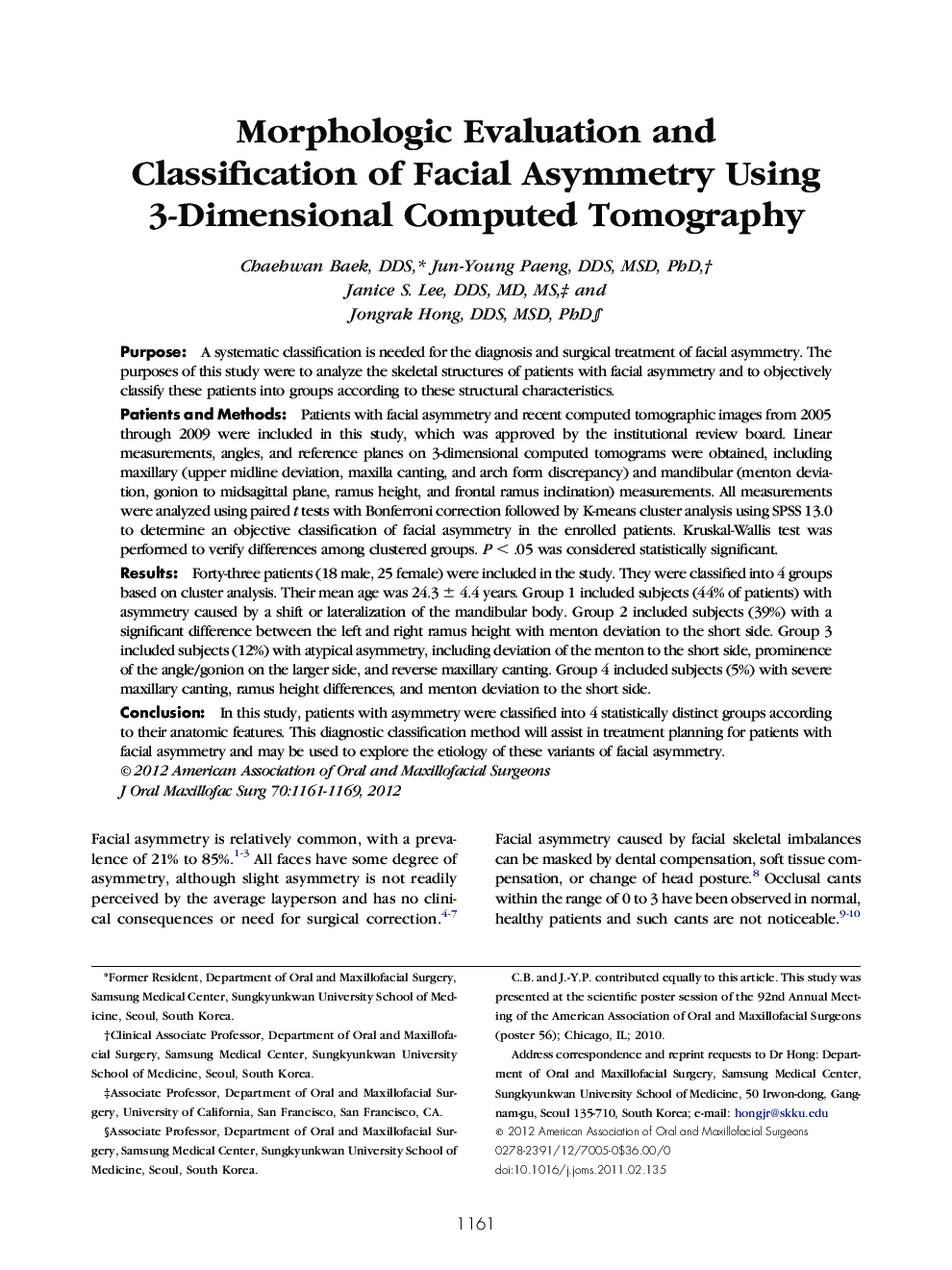| کد مقاله | کد نشریه | سال انتشار | مقاله انگلیسی | نسخه تمام متن |
|---|---|---|---|---|
| 3153200 | 1198026 | 2012 | 9 صفحه PDF | دانلود رایگان |

PurposeA systematic classification is needed for the diagnosis and surgical treatment of facial asymmetry. The purposes of this study were to analyze the skeletal structures of patients with facial asymmetry and to objectively classify these patients into groups according to these structural characteristics.Patients and MethodsPatients with facial asymmetry and recent computed tomographic images from 2005 through 2009 were included in this study, which was approved by the institutional review board. Linear measurements, angles, and reference planes on 3-dimensional computed tomograms were obtained, including maxillary (upper midline deviation, maxilla canting, and arch form discrepancy) and mandibular (menton deviation, gonion to midsagittal plane, ramus height, and frontal ramus inclination) measurements. All measurements were analyzed using paired t tests with Bonferroni correction followed by K-means cluster analysis using SPSS 13.0 to determine an objective classification of facial asymmetry in the enrolled patients. Kruskal-Wallis test was performed to verify differences among clustered groups. P < .05 was considered statistically significant.ResultsForty-three patients (18 male, 25 female) were included in the study. They were classified into 4 groups based on cluster analysis. Their mean age was 24.3 ± 4.4 years. Group 1 included subjects (44% of patients) with asymmetry caused by a shift or lateralization of the mandibular body. Group 2 included subjects (39%) with a significant difference between the left and right ramus height with menton deviation to the short side. Group 3 included subjects (12%) with atypical asymmetry, including deviation of the menton to the short side, prominence of the angle/gonion on the larger side, and reverse maxillary canting. Group 4 included subjects (5%) with severe maxillary canting, ramus height differences, and menton deviation to the short side.ConclusionIn this study, patients with asymmetry were classified into 4 statistically distinct groups according to their anatomic features. This diagnostic classification method will assist in treatment planning for patients with facial asymmetry and may be used to explore the etiology of these variants of facial asymmetry.
Journal: Journal of Oral and Maxillofacial Surgery - Volume 70, Issue 5, May 2012, Pages 1161–1169